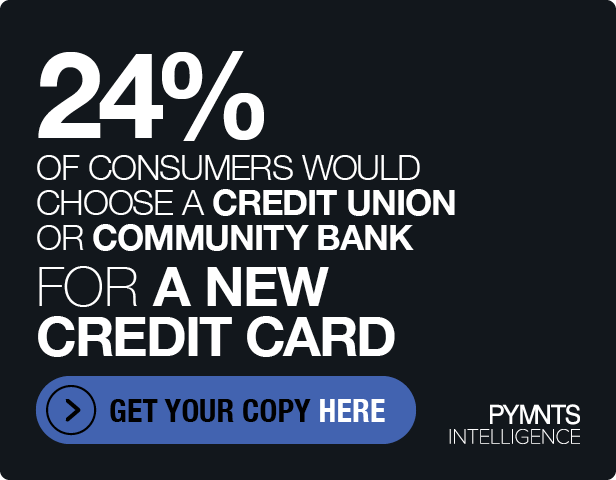Paper Checks’ ‘Long Tail’: What It Takes to Move B2B Into the Digital Age
To paraphrase Mark Twain, the death of the check – the paper kind – has been greatly exaggerated. Stubborn things they are – certainly they’ve found wide berth in B2B payments, even though their overall usage has been declining. The pandemic, though, has not been the nail in the coffin.
But there’s evidence that paper can indeed be replaced by digital conduits. The check card gave way to the debit card in the 1970s, as consumers moved away from paper at the point of sale to digital, and as more merchants accepted digital payments.
But as Deluxe CEO Barry McCarthy and Billtrust President Steve Pinado told Visa Vice President North America Products, Visa Business Solutions Leigh Radtke: Two years into the digital shift, we still need to see ubiquity as payors and payees align on how digital transactions will flow across financial services ecosystems.
As McCarthy noted, the paper check has “a very long tail.” They are still present in the economy at large, he said, often for some good reasons. But that doesn’t mean there aren’t myriad opportunities to digitize billions of checks that are in the field.
AS Pinado pointed out, there are some inherent, attractive features tied to checks. They’re tangible, and one can see at a glance how much they are worth, and the remittance that accompanies the check details what it’s for and when services or goods were provided. To get a sense of scale, consider the fact that the Fed collected more than 900 million checks last year in the third quarter alone, for a total of $2.1 trillion.
In the digital age, Pinado continued, providers are getting better at embedding that same wealth of information into automated lockbox or ACH payments or virtual cards. But to get companies to move from checks to digital forms of payments, he said, we’ll need multifaceted solutions to help provide choice for how one pays and is paid.
The transformation of B2B begins with the presentation of invoice data, Pinado said. Receiving that data in an efficient, digital way means the payor has “an embedded opportunity to pay electronically and to upload remittance electronically.” Companies are more likely to embrace those conduits than paper checks, he added. Accounts payable (AP) automation has been making it more attractive for firms – especially smaller firms – to automate workflows and internal approvals of payables.
But even as the AP side of the equation is becoming increasingly streamlined and automated, those transformations can cause frictions on the accounts receivable (AR) side of a transaction, as the costs of acceptance and processing payments are still high.
Said McCarthy: “The reason checks are still persisting is that there aren’t viable substitutes for so many critical use cases. There are still billions of checks being written on single-use transactions or non-recurring payments.”
In a hypothetical example, he said that the restaurant receiving a truck full of provisions, or the insurance company paying on a claim, might fall back on writing and issuing checks. After all, checks are the most universally accepted means of payment. The ability to append or attach remittance advice or information, whether it’s an explanation of benefits or what the payment is about, allows the recipient to do the reconciliation, added McCarthy.
Thus, it’s not all that surprising that while check issuance declined by a few percentage points during the pandemic, it didn’t fall off a cliff. In fact, McCarthy noted that Deluxe’s own check volume grew in the second quarter of this past year.
To solve for the outstanding use cases, even the single-payment scenarios that have been a mainstay of check-based payments, McCarthy and Pinado said that cards are part of a digitally secure, safe future of moving beyond checks – especially for smaller firms that don’t have the resources to print and send the checks, or to wait for the payments to settle. Cash flow visibility is critical.
Moving Toward Agreement
As McCarthy noted, “the payor and the payee have to agree on how that payment will be conducted, or it won’t happen.”
With credit cards and debit cards – and their virtual issuance – there is the “least heavy lift” of having to solve the two-sided market dilemma tied to agreement, said McCarthy.
Pinado likened the B2B and single-use payments as the “bottom-loaded tree,” or low-hanging fruit, which can be fertile ground for introducing digital payments and displacing checks. Larger firms with a high velocity of transactions and a diverse delivery of products tend to require a wide range of remittance, translating into trillions of dollars of check payments. Verticals that are most ripe to make the digital shift, said McCarthy and Pinado, include building materials suppliers, equipment firms, distributors and carriers.
Pinado noted that cards have their own costs – just as checks do – and the card brands and intermediaries must “continue to evolve” and do a better job of matching buyers and sellers (and driving down costs). After all, the stakeholders – including buyers, suppliers and card issuers – have a vested interest in driving volume.
And as Pinado added, that volume could be driven by “providing the supplier with the flexibility to determine the appropriate cost for any given payment or for a certain customer.”
Integration of digital payments into ERP or accounting systems can give rise to the “perfect payment,” added McCarthy. To the extent that adoption continues, networks are created – and networks in and of themselves create efficiency, because common behavior takes shape among network participants.
As Pinado noted to the panel, “the efficiency that is happening with technology is ‘overcoming’ the paper check as a payment vehicle in B2B. It’s an exciting time.”
